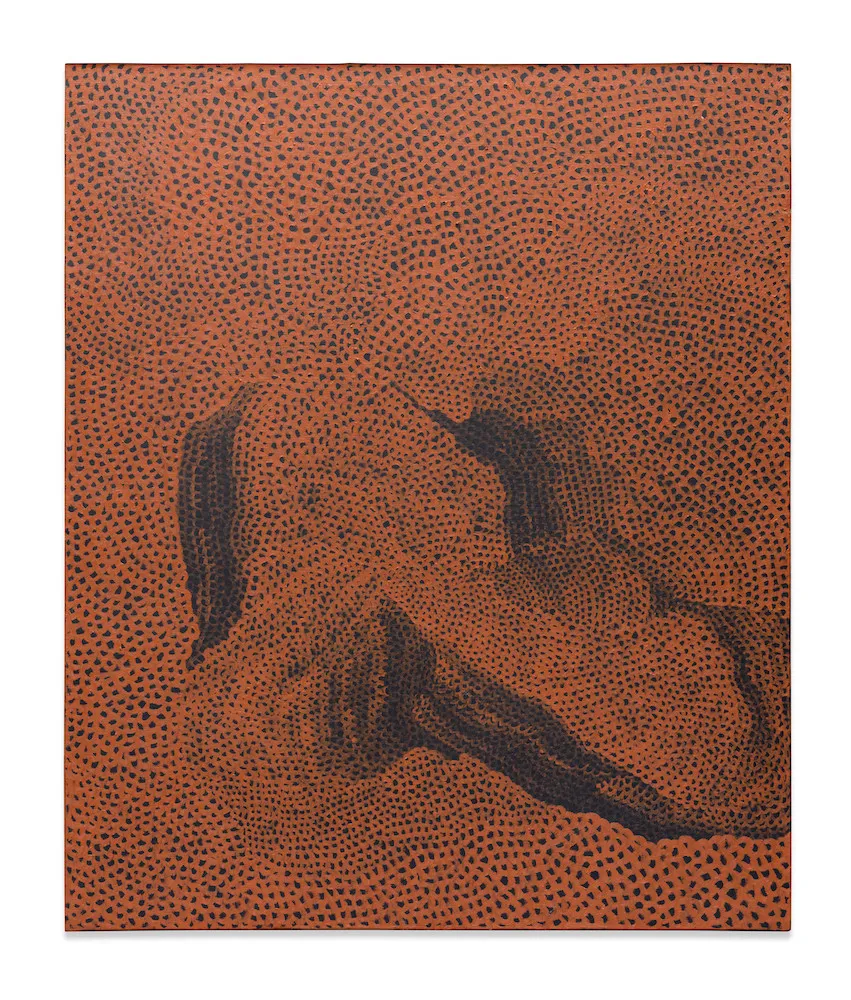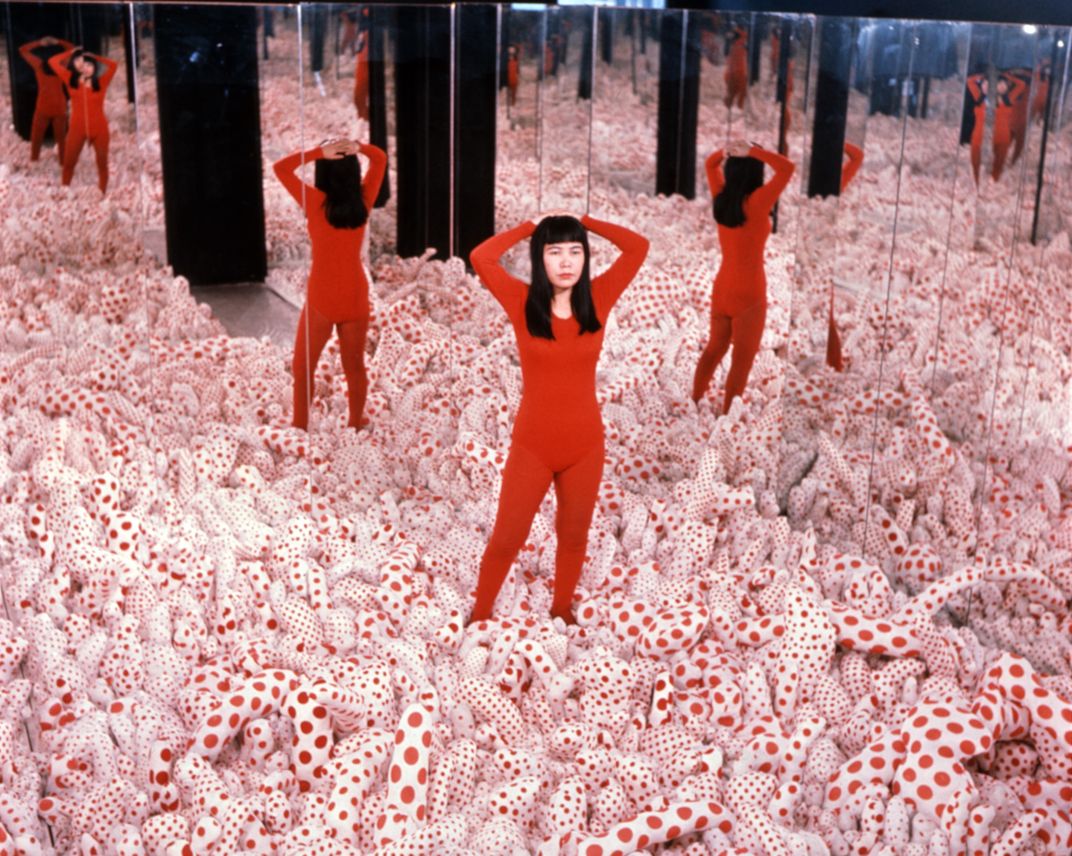Trove of Early Yayoi Kusama Works to Go on Public View for the First Time
The Japanese artist gifted the pieces, which will be exhibited ahead of a May auction, to her doctor as thanks for free medical care
/https://tf-cmsv2-smithsonianmag-media.s3.amazonaws.com/filer/c8/1f/c81f8dbc-0cdf-4e14-a18c-580559b649c5/030.jpg)
When the esteemed Japanese artist Yayoi Kusama was a struggling creative in 1960s Manhattan, she needed a doctor but couldn’t afford one. Faced with few options, she visited physician Teruo Hirose (one of only two Japanese-speaking doctors on the island at the time), who often provided inexpensive or pro bono medical care to fellow Japanese immigrants.
Hirose agreed to treat her, and in return, she gave him a number of artworks as a token of gratitude. The pair remained friends until Hirose’s death in November 2019 at age 93.
This May, reports Angelica Villa for ARTnews, 11 of these gifted artworks are set to hit the auction block. Combined, Bonhams expects the three paintings and eight works on paper to sell for between $8.8 million and $14 million.
“This is an exceptional collection of extremely rare early works by Yayoi Kusama,” says Bonhams Post-War & Contemporary Art head Ralph Taylor in a statement. “Not only do these works have an incredible provenance, but they are also extremely significant in Kusama’s oeuvre, expressing many early features and themes which she would continue to explore and develop throughout her career.”
Many of the works included in the sale feature Kusama’s characteristic motifs. For example, Hudson River (1960), a heady crimson painting interspersed with miniscule black marks, marks one of the first appearances of the artist’s signature Infinity Net patterns. Kusama, who has experienced symptoms consistent with psychosis and schizophrenia throughout her life, drew inspiration for this design from childhood hallucinations consisting of dots and nets, according to a blog post by contemporary art gallery Unit London.

“Her drawings and paintings represented this veil of separation through repetitive patterns, dots, or nets that spread out infinitely, obliterating everything in their path,” Betsy Johnson, an assistant curator at the Smithsonian’s Hirshhorn Museum and Sculpture Garden, tells Smithsonian magazine. “At first frightening to her, this obliteration later became something that Kusama embraced with the understanding that we are all part of the fabric of the universe—from the cells in our bodies to the stars in the skies.”
Hudson River and Mississippi River (1960), a similarly titled Infinity Net painting, are estimated to sell at Bonhams for between $3 million and $5 million each, notes Artnet News.
Some pieces in the sale, like Untitled (1965), offer early examples of other mainstays in Kusama’s work. The painting depicts a series of multicolored rectangular forms reminiscent of mirrors, which Kusama uses extensively in her Infinity Mirror works—interactive installations filled with reflective glass that creates the illusion of a never-ending space.
“Her Untitled painting demonstrates Kusama’s experimentation during the 1960s, while also foreshadowing her recognizable mirror boxes—where images grow and radiate from a single point,” says Taylor in the statement.
Born in Japan in 1929, Kusama became a prolific artist at an early age. She began creating paintings as a child, around the same time that she first started experiencing hallucinations.

“[These] hallucinations … would overwhelm her senses and effectively cut her off from her surroundings,” says Johnson. “At times it was as if a thin, grey veil had fallen around her, temporarily transporting her to another realm.”
Though Kusama was a talented adolescent, her parents were abusive and often discouraged her from pursuing a career as an artist. At one point, Kusama’s mother took away her canvases and destroyed them, pushing her daughter to instead become a housewife. But Kusama continued to create art in secret, and she eventually left her home country to make it as an painter in New York City, per a Tate Britain blog post.
When Kusama came to the United States in 1957, she brought 2,000 of her artworks with her. (Seven of these early creations will be showcased in the upcoming auction, according to ARTnews.) The artist’s move was difficult for an array of reasons—one being that male artists like Andy Warhol and Claes Oldenburg adopted some of her ideas and gained more recognition for them than she did, as Tim Adams wrote for the Observer in 2018. Kusama also began to suffering from health problems that would continue to plague her later in life.
“Since mental health issues were not openly discussed by those around her,” says Johnson, “[her experiences] isolated Kusama and art became a means through which she was able to record and confront what was happening to her.”
To cope with her medical challenges, Kusama sought treatment from Hirose, who had also immigrated to the States in the 1950s. Eventually, he became her friend as well as doctor; the two remained close for decades, even after the artist returned to Japan in 1973.
The trove of art on offer represents “the rarest group of Kusama works from the late 1950s and 1960 to ever come to auction,” says Bonhams in the statement. Prior to the May 12 sale, the pieces in the upcoming auction will be exhibited publicly for the first time in Hong Kong and New York.
Comparable works from the beginning of Kusama’s career have garnered widespread acclaim. In April 2019, one of her 1959 Infinity Net paintings sold at Sotheby’s for around $7.9 million.
Today, Kusama’s eminently Instagram-worthy Infinity Mirror installations and other visual spectacles, have made her one of the most famous artists in the world.
“Through her unfaltering commitment to her vision Kusama has shown that female artists need not cater to patriarchal standards in order to succeed,” says Johnson, who curated the upcoming exhibition “One With Eternity: Kusama in the Hirshhorn Collection.” (Originally slated to open in April 2020, the show was postponed by Covid-19 lockdowns. New dates have yet to be announced.)
“Instead,” the curator adds, “by staying true to herself and foregrounding her own experience, Kusama has created work that powerfully resonated with millions of viewers.”
/https://tf-cmsv2-smithsonianmag-media.s3.amazonaws.com/accounts/headshot/Isis_Davis-Marks_thumbnail.png)


/https://tf-cmsv2-smithsonianmag-media.s3.amazonaws.com/accounts/headshot/Isis_Davis-Marks_thumbnail.png)